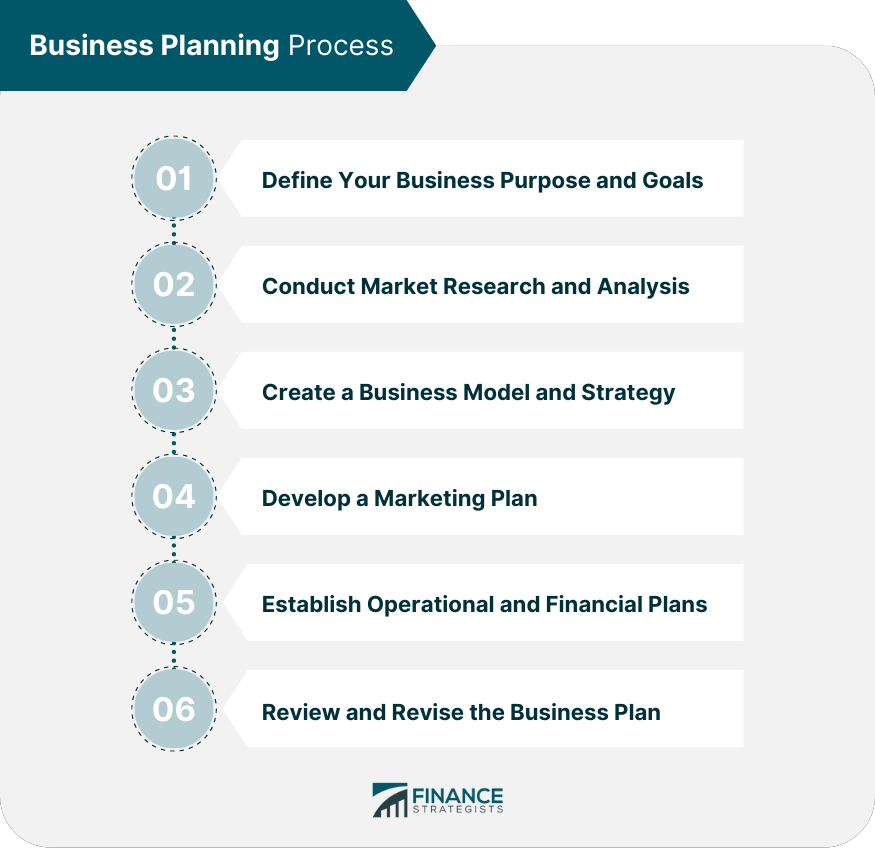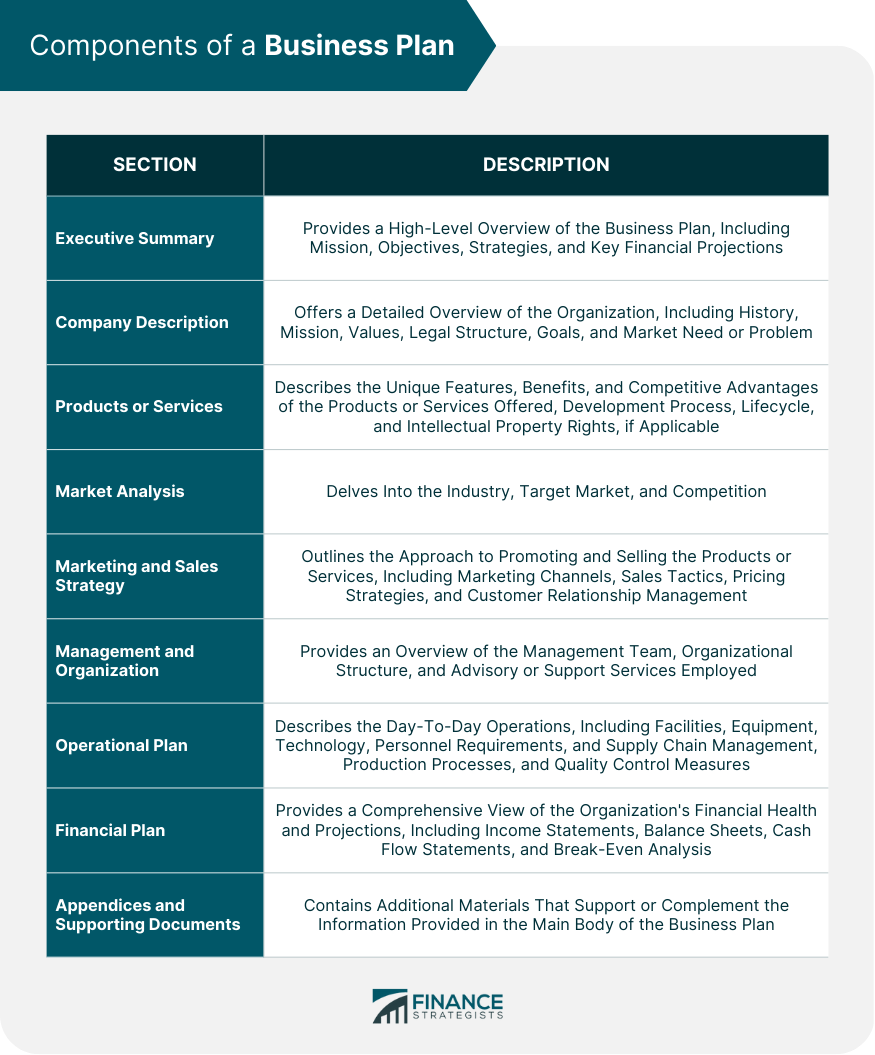Business planning is a crucial process that involves creating a roadmap for an organization to achieve its long-term objectives. It is the foundation of every successful business and provides a framework for decision-making, resource allocation, and measuring progress towards goals. Business planning involves identifying the current state of the organization, determining where it wants to go, and developing a strategy to get there. It includes analyzing the market, identifying target customers, determining a competitive advantage, setting financial goals, and establishing operational plans. The business plan serves as a reference point for all stakeholders, including investors, employees, and partners, and helps to ensure that everyone is aligned and working towards the same objectives. Business planning plays a critical role in the success of any organization, as it helps to establish a clear direction and purpose for the business. It allows the organization to identify its goals and objectives, develop strategies and tactics to achieve them, and establish a framework of necessary resources and operational procedures to ensure success. Additionally, a well-crafted business plan can serve as a reference point for decision-making, ensuring that all actions taken by the organization are aligned with its long-term objectives. It can also facilitate communication and collaboration among team members, ensuring that everyone is working towards a common goal. Furthermore, a business plan is often required when seeking funding or investment from external sources, as it demonstrates the organization's potential for growth and profitability. Overall, business planning is essential for any organization looking to succeed and thrive in a competitive market. Begin by clarifying your business's purpose, mission, and long-term goals. These elements should align with the organization's core values and guide every aspect of the planning process. Thorough market research and analysis are crucial to understanding the industry landscape, identifying target customers, and gauging the competition. This information will inform your business strategy and help you find your niche in the market. Based on the insights from your market research, develop a business model that outlines how your organization will create, deliver, and capture value. This will inform the overall business strategy, including identifying target markets, value propositions, and competitive advantages. A marketing plan details how your organization will promote its products or services to target customers. This includes defining marketing objectives, tactics, channels, budgets, and performance metrics to measure success. The operational plan outlines the day-to-day activities, resources, and processes required to run your business. The financial plan projects revenue, expenses, and cash flow, providing a basis for assessing the organization's financial health and long-term viability. Regularly review and update your business plan to ensure it remains relevant and reflects the organization's current situation and goals. This iterative process enables proactive adjustments to strategies and tactics in response to changing market conditions and business realities. The executive summary provides a high-level overview of your business plan, touching on the company's mission, objectives, strategies, and key financial projections. It is critical to make this section concise and engaging, as it is often the first section that potential investors or partners will read. The company description offers a detailed overview of your organization, including its history, mission, values, and legal structure. It also outlines the company's goals and objectives and explains how the business addresses a market need or problem. Describe the products or services your company offers, emphasizing their unique features, benefits, and competitive advantages. Detail the development process, lifecycle, and intellectual property rights, if applicable. The market analysis section delves into the industry, target market, and competition. It should demonstrate a thorough understanding of market trends, growth potential, customer demographics, and competitive landscape. Outline your organization's approach to promoting and selling its products or services. This includes marketing channels, sales tactics, pricing strategies, and customer relationship management. This section provides an overview of your company's management team, including their backgrounds, roles, and responsibilities. It also outlines the organizational structure and any advisory or support services employed by the company. The operational plan describes the day-to-day operations of your business, including facilities, equipment, technology, and personnel requirements. It also covers supply chain management, production processes, and quality control measures. The financial plan is a crucial component of your business plan, providing a comprehensive view of your organization's financial health and projections. This section should include income statements, balance sheets, cash flow statements, and break-even analysis for at least three to five years. Be sure to provide clear assumptions and justifications for your projections. The appendices and supporting documents section contains any additional materials that support or complement the information provided in the main body of the business plan. This may include resumes of key team members, patents, licenses, contracts, or market research data. A well-crafted business plan demonstrates to potential investors and lenders that your organization is well-organized, has a clear vision, and is financially viable. It increases your chances of securing the funding needed for growth and expansion. A business plan serves as a roadmap that guides your organization's growth and development. It helps you set realistic goals, identify opportunities, and anticipate challenges, enabling you to make informed decisions and allocate resources effectively. Having a comprehensive business plan enables you and your management team to make well-informed decisions, based on a clear understanding of the organization's goals, strategies, and financial situation. A business plan serves as a communication tool that fosters collaboration and alignment among team members, ensuring that everyone is working towards the same objectives and understands the organization's strategic direction. Business planning should not be a one-time activity; instead, it should be an ongoing process that is continually reviewed and updated to reflect changing market conditions, business realities, and organizational goals. This dynamic approach to planning ensures that your organization remains agile, responsive, and primed for success. As the business landscape continues to evolve, organizations must embrace new technologies, methodologies, and tools to stay competitive. The future of business planning will involve leveraging data-driven insights, artificial intelligence, and predictive analytics to create more accurate and adaptive plans that can quickly respond to a rapidly changing environment. By staying ahead of the curve, businesses can not only survive but thrive in the coming years.What Is Business Planning?
Importance of Business Planning
Business Planning Process
Step 1: Defining Your Business Purpose and Goals
Step 2: Conducting Market Research and Analysis
Step 3: Creating a Business Model and Strategy
Step 4: Developing a Marketing Plan
Step 5: Establishing Operational and Financial Plans
Step 6: Reviewing and Revising the Business Plan

Components of a Business Plan
Executive Summary
Company Description
Products or Services
Market Analysis
Marketing and Sales Strategy
Management and Organization
Operational Plan
Financial Plan
Appendices and Supporting Documents

Benefits of Business Planning
Helps Secure Funding and Investment
Provides a Roadmap for Growth and Success
Enables Effective Decision-Making
Facilitates Communication and Collaboration

Conclusion
Business Planning FAQs
Business planning is the process of setting goals, outlining strategies, and creating a roadmap for your company's future. It's important because it helps you identify opportunities and risks, allocate resources effectively, and stay on track to achieve your goals.
A business plan typically includes an executive summary, company description, market analysis, organization and management structure, product or service line, marketing and sales strategies, and financial projections.
It is a good idea to review and update your business plan annually, or whenever there's a significant change in your industry or market conditions.
Effective business planning can help you anticipate challenges, identify opportunities for growth, improve decision-making, secure financing, and stay ahead of competitors.
Yes, even if you're not seeking funding, a business plan can be a valuable tool for setting goals, developing strategies, and keeping your team aligned and focused on achieving your objectives.
True Tamplin is a published author, public speaker, CEO of UpDigital, and founder of Finance Strategists.
True is a Certified Educator in Personal Finance (CEPF®), author of The Handy Financial Ratios Guide, a member of the Society for Advancing Business Editing and Writing, contributes to his financial education site, Finance Strategists, and has spoken to various financial communities such as the CFA Institute, as well as university students like his Alma mater, Biola University, where he received a bachelor of science in business and data analytics.
To learn more about True, visit his personal website or view his author profiles on Amazon, Nasdaq and Forbes.















